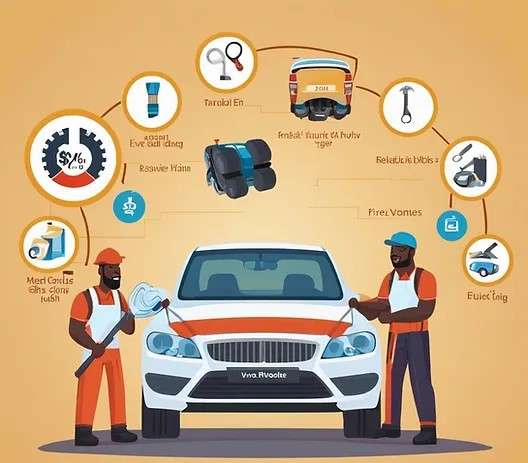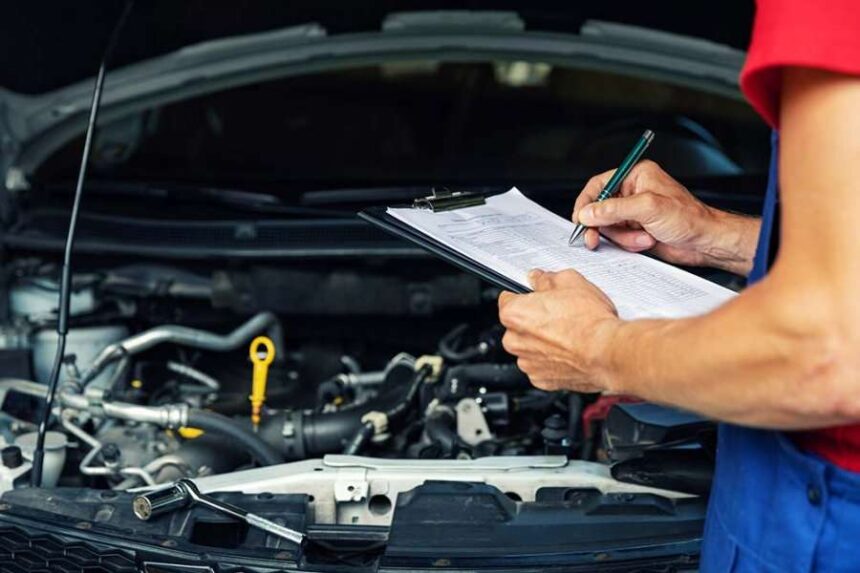Owning a car is a significant investment, and ensuring its longevity requires more than just routine trips to the gas station. Proper car maintenance not only extends the lifespan of your vehicle but also helps avoid expensive repairs down the road, maintains optimal performance, and boosts resale value. By taking the time to understand essential car maintenance tasks and practicing consistent care, you can keep your vehicle running smoothly for years to come.
In this comprehensive guide, we will cover the most important car maintenance tips to help you prolong your vehicle’s life, maintain its safety, and improve your driving experience.
1. Regular Oil Changes
Oil is the lifeblood of your engine, lubricating its moving parts, reducing friction, and preventing wear and tear. Over time, engine oil breaks down, becomes dirty, and loses its effectiveness, leading to increased engine wear and, eventually, costly repairs.
a) How Often to Change the Oil
The frequency of oil changes depends on your vehicle, driving habits, and oil type. As a general rule:
- Advertisement -
- For older vehicles using conventional oil, change the oil every 3,000 to 5,000 miles.
- For newer vehicles with synthetic oil, change it every 7,500 to 10,000 miles, or as recommended by the manufacturer.
b) Check the Oil Level Regularly
To avoid running low on oil, regularly check your oil level using the dipstick. Add oil if needed, but avoid overfilling, as this can damage the engine.
2. Maintain the Cooling System
The cooling system helps prevent your engine from overheating by circulating coolant through the engine and radiator. A malfunctioning cooling system can lead to overheating, which can cause severe engine damage.
a) Check Coolant Levels
Regularly inspect the coolant reservoir and top it off if necessary. Be sure to use the type of coolant specified in your owner’s manual.
b) Flush the Cooling System
Over time, contaminants can accumulate in the cooling system, reducing its effectiveness. Flushing the system and replacing the coolant every two to three years (or as recommended by your manufacturer) helps maintain optimal performance.
3. Replace Air Filters
Air filters prevent dirt, debris, and contaminants from entering your engine and affecting its performance. A clogged air filter can reduce fuel efficiency, cause engine misfires, and even lead to engine damage.
a) Engine Air Filter
Inspect and replace the engine air filter according to your vehicle’s maintenance schedule. In dusty or off-road environments, you may need to replace it more frequently.
b) Cabin Air Filter
The cabin air filter helps keep the air inside your car clean by filtering out dust, pollen, and other pollutants. Replacing it regularly improves air quality and ensures proper airflow from the air conditioning and heating systems.
4. Check and Replace the Brake Pads
Brakes are critical for your safety, and maintaining them should be a top priority. Brake pads wear out over time, reducing stopping power and increasing the risk of accidents.
a) Signs of Worn Brake Pads
- Squealing or grinding noises when braking
- Reduced brake responsiveness
- Vibration or pulsation when applying the brakes
If you notice any of these signs, have your brake pads inspected and replaced if necessary.
b) Brake Fluid Maintenance
Brake fluid is essential for transferring the force from your brake pedal to the brakes themselves. Over time, brake fluid can absorb moisture and become less effective. Check the brake fluid level regularly and replace it every two to three years, or as recommended by the manufacturer.
5. Inspect Tires Regularly

Tires play a crucial role in vehicle safety, handling, and fuel efficiency. Proper tire maintenance extends their lifespan and ensures a safe driving experience.
a) Check Tire Pressure
Under-inflated or over-inflated tires can lead to uneven wear, reduced fuel efficiency, and poor handling. Check tire pressure monthly and inflate them to the recommended pressure level, which can be found in your owner’s manual or on a sticker inside the driver’s door.
b) Rotate Tires
Regular tire rotation helps distribute wear evenly across all tires, improving their lifespan and maintaining balanced handling. Rotate your tires every 5,000 to 7,500 miles, or as specified in your vehicle’s maintenance schedule.
c) Inspect Tread Depth
Worn-out tires reduce traction, especially in wet conditions, increasing the risk of accidents. Use the penny test (inserting a penny into the tread with Lincoln’s head facing down) to check tread depth. If you can see the top of Lincoln’s head, it’s time to replace the tires.
6. Keep the Battery in Good Condition
The car battery provides the electrical energy needed to start the engine and power electrical components. A dead or weak battery can leave you stranded and cause inconvenience.
a) Check the Battery Terminals
Inspect the battery terminals for corrosion or loose connections. Clean any corrosion using a mixture of baking soda and water and ensure the terminals are tightly secured.
b) Test the Battery Voltage
Regularly test the battery’s voltage to ensure it is holding a charge. Most auto parts stores offer free battery testing services.
c) Replace the Battery When Necessary
Car batteries typically last three to five years, depending on usage and climate conditions. Replace the battery when it shows signs of weakness, such as slow engine cranking or dim headlights.
7. Keep Fluids Topped Off
Your car relies on several fluids to keep its components working properly. Checking and maintaining fluid levels is crucial for optimal performance.
a) Transmission Fluid
Transmission fluid lubricates and cools the transmission system. Low or dirty fluid can lead to shifting issues and transmission failure. Check the fluid level and condition regularly and replace it as specified in the owner’s manual.
b) Power Steering Fluid
Power steering fluid ensures smooth steering. If you notice difficulty turning the wheel or hear whining noises, check the fluid level and top it off if necessary.
c) Windshield Washer Fluid
While not critical to engine performance, keeping your windshield washer fluid topped off ensures good visibility during inclement weather.
8. Maintain Belts and Hoses
Belts and hoses play vital roles in your engine’s operation. A broken belt or hose can lead to overheating, loss of power steering, or engine failure.
a) Inspect Belts for Cracks and Wear
Check the condition of your serpentine belt and other belts in the engine bay. Look for cracks, fraying, or signs of wear. Replace belts if they show any signs of damage.
b) Inspect Hoses for Leaks
Examine hoses for leaks, bulges, or cracks. Pay special attention to the radiator hoses, as a burst hose can lead to engine overheating.
9. Follow the Manufacturer’s Maintenance Schedule
Every car comes with a manufacturer-recommended maintenance schedule, outlining specific tasks and intervals for inspections, fluid changes, and part replacements. Following this schedule ensures that your vehicle receives timely maintenance and prevents issues from escalating.
10. Keep the Exterior and Interior Clean
Keeping your car clean not only enhances its appearance but also prevents rust, corrosion, and interior damage.
a) Wash and Wax the Exterior
Regular washing removes dirt, salt, and debris that can damage the paint and cause rust. Applying wax every few months protects the paint and adds a layer of protection against UV rays and contaminants.
b) Vacuum and Clean the Interior
Dirt, dust, and debris can accumulate inside your car, causing wear and tear on upholstery and surfaces. Regular vacuuming and cleaning keep the interior looking new and maintain a comfortable driving environment.
11. Replace Worn Wiper Blades
Worn-out wiper blades reduce visibility during rain, snow, or sleet. Replace the blades if they leave streaks or make noise while operating.
12. Monitor the Exhaust System
A malfunctioning exhaust system can lead to decreased engine performance, reduced fuel efficiency, and increased emissions.
a) Check for Unusual Noises
Listen for loud or unusual noises coming from the exhaust. These could indicate a leak or other issues that require professional attention.
b) Inspect for Rust or Damage
Periodically check the exhaust system for signs of rust, damage, or loose connections.
13. Listen to Your Car
Your car often gives warning signs when something is wrong. Pay attention to any unusual noises, vibrations, or changes in performance. Addressing these issues early can prevent more extensive and costly repairs.
14. Drive Responsibly
How you drive has a significant impact on your car’s longevity. Aggressive driving, rapid acceleration, and sudden braking can increase wear and tear on your vehicle’s components.
a) Avoid Overloading
Carrying excessive weight puts extra strain on the engine, suspension, and brakes, reducing their lifespan.
b) Warm Up Your Engine
If you live in a cold climate, allow your engine to warm up before driving. This ensures proper lubrication and reduces stress on engine components.
15. Keep an Emergency Kit in Your Car
Despite your best efforts, emergencies can happen. Keep a well-stocked emergency kit in your car, including:
- A spare tire, jack, and lug wrench
- Jumper cables
- Flashlight and batteries
- Basic tools
- First aid kit
- Emergency water and non-perishable snacks
Consistent car maintenance is essential for prolonging your vehicle’s life, enhancing safety, and avoiding costly repairs. By following these essential tips and staying proactive with care, you can ensure your car remains reliable, efficient, and ready to take you wherever you need to go. Investing time and effort into proper maintenance not only saves money but also gives you peace of

